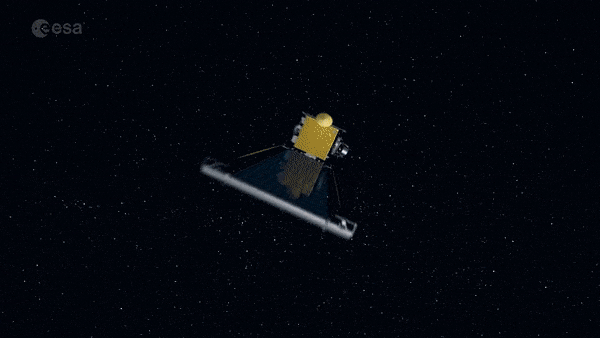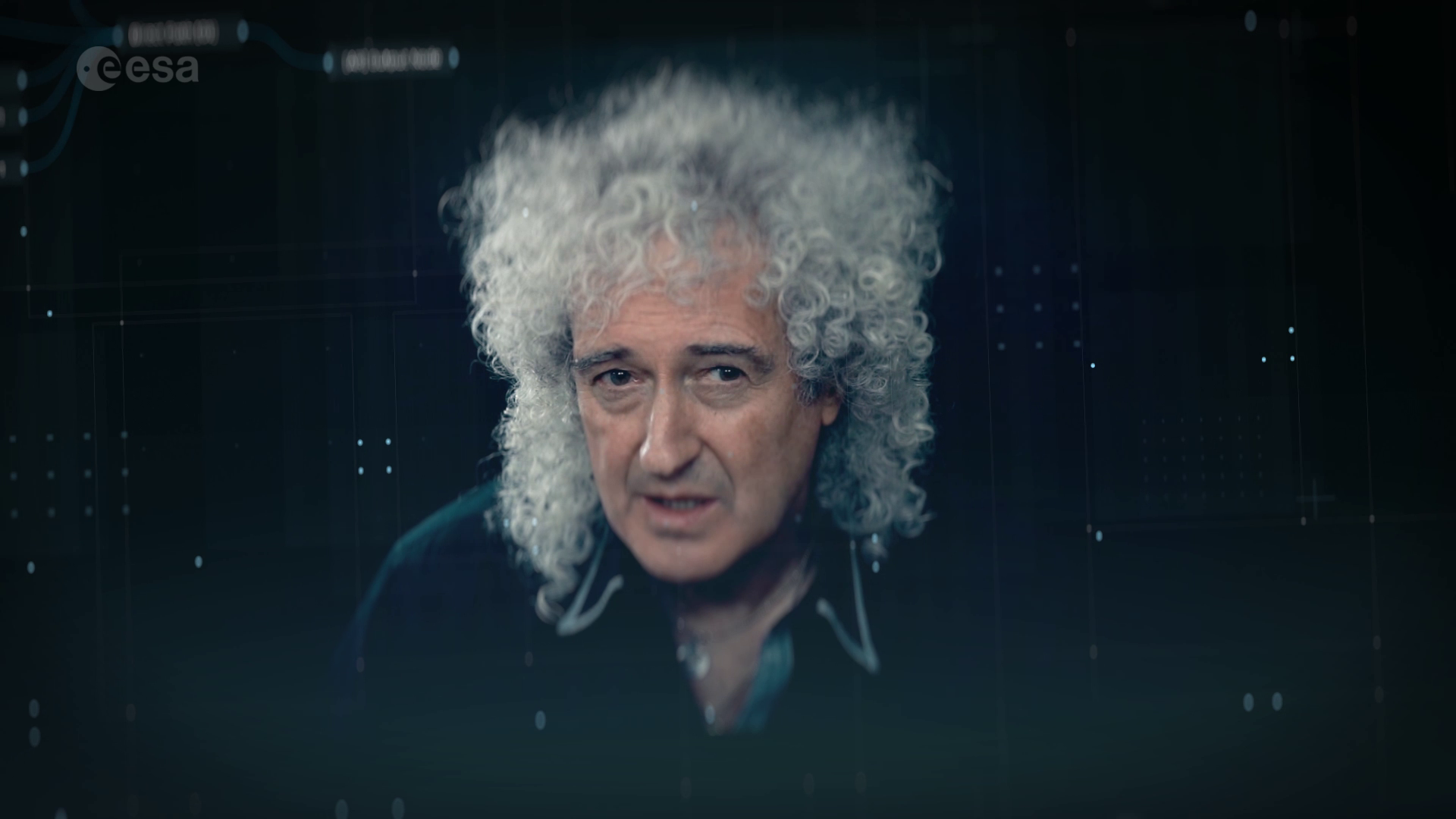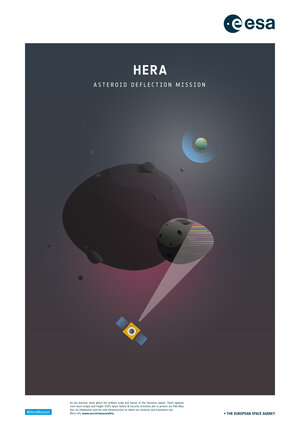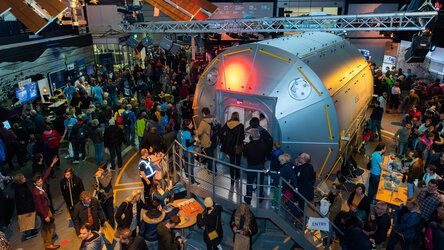Apollo astronaut champions Hera for planetary defence
Having spent much of the 21st century developing planetary defence techniques, Apollo astronaut Rusty Schweickart is a strong supporter of ESA’s proposed Hera mission. In general, when it comes to asteroid deflection, he says, two spacecraft are better than one.
“For asteroid deflection by kinetic impact, we stopped talking about a single deflection mission and we’ve started talking about a deflection campaign instead, based on an observer spacecraft as well as the impactor spacecraft,” explains Schweickart, who became the first astronaut to fly the Lunar Module during the Apollo 9 mission in March 1969.

After departing NASA, Schweickart remained active in the space arena, working with cosmonauts to establish the Association of Space Explorers. Then in 2002 he helped found the B612 Foundation, devoted to saving Earth from asteroid impacts – its name taken from the planetoid in children’s classic The Little Prince.
Now, after years of patient research and advocacy, the first practical test of planetary deflection is going to happen. NASA’s Double Asteroid Redirect Test will slam into the smaller of the Didymos binary asteroids in late 2022. Then – if approved at ESA’s Space19+ gathering of Europe’s space ministers in late November – ESA’s Hera mission will perform a close-up survey of the asteroid and human-made crater after impact.

He explains: “With Hera we’ll be able to validate a significant proportion of what an operational observer spacecraft would do: for instance, find out how precisely we can determine the post-impact orbit – what is the level of accuracy we’re going to achieve?
“And one of the key unknowns of the kinetic impactor technique is a term we call ‘beta’ – when we hit the asteroid, how much stuff is going to come flying off? If it’s moving at greater than escape velocity, then that adds to the momentum shifting the orbit, boosting the technique’s effectiveness. That factor depends on the asteroid’s composition and structure, and we need a close-up look to find out what that is.”

Spotting a space rock with the naked eye
Schweickart recalls one semi-close encounter with a space rock: “During the Apollo 9 mission we were dark-adapted for an experiment, looking at the spectacular night-time Earth, watching weather fronts, thunder storms and lightning, a really great sight out of the window. Then, who knows who said it first, but one of us said they saw a little flash down there and someone else says ‘yeah, I saw it too,’ but you wouldn’t have mentioned it if the first person hadn’t said it.
“And then we realised: that was a meteor, burning up below us. Wow, below us – which meant it came down through our altitude!”

He ascribes his current interest in planetary defence to the rise of astrobiology in the 1990s, which included a focus on the earliest possible life on Earth. “One of the related questions was the impact history of Earth, and the incredible levels of energy released by these asteroid strikes.”
That led in turn to a natural follow-up discussion: “We’re discovering more and more asteroids, and if we find one headed our way, what can we do? Is technology at a point where there’s anything we can do? The answer was a tentative yes, so we formed the B612 Foundation to advance the idea of deflecting asteroids.

Changing the orbit of an asteroid
“We came up with our Kennedyesque statement that we were going to change the orbit of an asteroid in a controlled way. It’s a straightforward enough goal but the orbital mechanics are really a non-trivial element, because it’s a multi-body problem, involving the asteroid plus Earth and other planets in solar orbit.
“Being an astronaut, and in particular working on early rendezvous techniques, was important for understanding the orbital dynamics. There are areas in space called ‘keyholes’ where asteroid orbits are shifted by the influence of Earth and other planets, and most bodies that strike Earth will have passed through such keyholes. In astronautic terms it’s like they undergo a burn, a change in velocity.”

Hit hard or pull softly
While on the one hand emphasising the importance of early detection, on the other the B612 Foundation examined various deflection approaches. Kinetic impact is the current baseline method, but less violent techniques are also under consideration, such as a ‘gravity tractor’ which involves flying a spacecraft close enough to an asteroid so its gravitational attraction gradually pulls the body off course.
As opposed to the experimental DART-Hera test, in an operational version of a deflection campaign the observer spacecraft would ideally reach the target asteroid first. As Schweickart notes: “The first thing to do is for it to observe the orbit with very high accuracy and then nine times out of ten find out it’s not going to hit Earth at all.

“Or, if the impact probability remains unacceptably high, the kinetic impactor is launched and the observer spacecraft watches the impact from a safe distance, then comes back to make a precise determination of the new orbit, to check if the deflection is successful, or maybe it has actually nudged the asteroid towards another keyhole, risking an eventual collision.
“In that case the observer spacecraft would have another job to do – to switch to gravity tractor mode, using altimeters and ion engines to stay just away from the asteroid, and nudge its orbit enough to miss the keyhole as well as the planet.”

A planetary decision
If the technical challenges today seem just about surmountable – with sufficient early warning – Schweickart says the larger geopolitical issues are still to be considered. Deciding to mount an asteroid deflection would be a huge decision, needing debate on a planetary scale. “Who, for instance, decides how high the impact risk has to be before we launch? Is it one in 20? How about one in 12, one in 10? The Association of Space Explorers has been working to get the world community to look at this.”
So operational asteroid deflection campaigns will most likely be international in nature, as this first experiment will become, if a European spacecraft does indeed follow the US impactor mission to Didymos.


Access the video














 Germany
Germany
 Austria
Austria
 Belgium
Belgium
 Denmark
Denmark
 Spain
Spain
 Estonia
Estonia
 Finland
Finland
 France
France
 Greece
Greece
 Hungary
Hungary
 Ireland
Ireland
 Italy
Italy
 Luxembourg
Luxembourg
 Norway
Norway
 The Netherlands
The Netherlands
 Poland
Poland
 Portugal
Portugal
 Czechia
Czechia
 Romania
Romania
 United Kingdom
United Kingdom
 Slovenia
Slovenia
 Sweden
Sweden
 Switzerland
Switzerland


































